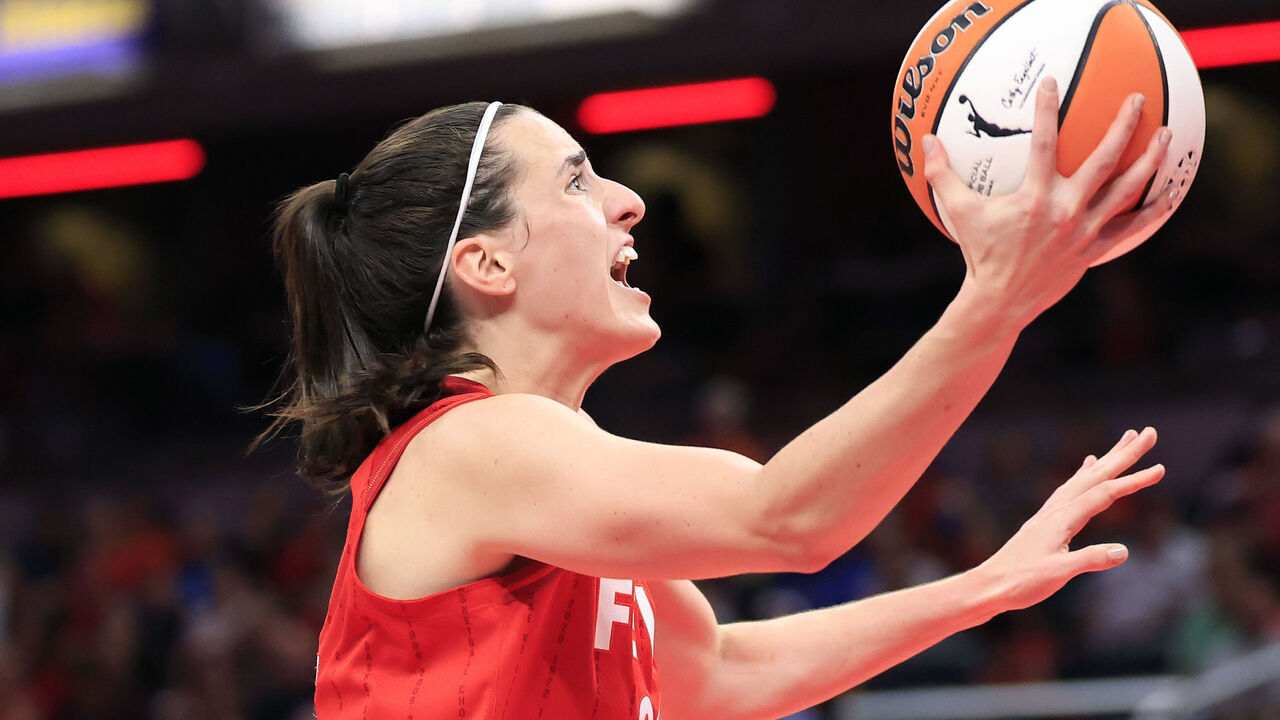Fever rising: Caitlin Clark's having a rookie season for the ages
A month ago, the Caitlin Clark story seemed to have settled into a balance.
There was the supernova of her entrance into the WNBA, coming directly off that record-setting college career, and the quick realization that, despite all the attention, the adjustment to the professional game might take a minute. Her Indiana Fever started 3-10, which wasn't all that surprising since they were 13-27 last year. They had the No. 1 draft pick for a reason.
Soon came the backlash, and the backlash to the backlash, where everyone argued whether she was getting too much favorable attention or too much poor treatment from opponents. Then there was a whole other media cycle when she wasn't named to the U.S. Olympic team. Was it a snub? Had USA Basketball made a bad decision for the sport?
Clark, 22, basically tried to keep her head down through all of it, which is a reasonable way to approach being at the center of a circus. And on the court, the early rough patches were smoothed out. Clark still wasn't shooting with the accuracy of her absurd college highs, but she didn't look out of place and the Fever were at least competitive.
You could see where this was going. After the NCAA title-game run with Iowa and then immediately starting her pro career, Clark would finish out her rookie year and finally get a bit of a breather - all the more important given the incandescent light she'd been under the past several months. She and the Fever would be back next year, able to have something approaching a normal season.
But, funny thing: Since the WNBA returned from its Olympic break, Clark and Indiana look like they have no interest in waiting until next year. They've won both games, the last a blowout over Seattle, and Clark posted lines reminiscent of those from Iowa: averages of 26 points, 9.5 assists, and five rebounds over the two games.
The Fever are now 13-15, hold the seventh of eight WNBA playoff spots, and have the benefit of a comfortable closing stretch. They had the league's second-toughest schedule by strength of opponent before the Olympic break and now have the second easiest for the remaining month. They also have more home games and more rest days, after the league front-loaded the Fever's schedule to ride the Clark publicity wave in the early part of the season.
The Fever, in other words, have gone from 3-10 to the proverbial Team You Don't Want to Meet in the playoffs.
And while it might have seemed like all the attention on Clark would burn out after a few weeks, instead it's held steady. The Fever-Storm game last weekend drew 2.23 million viewers in the U.S. on ABC, more than double the audience of last year's average. To put that number in context, that's a bigger audience than the first six games of the 2024 Stanley Cup Final on the same network. It's also the 19th time a WNBA game cracked the million mark in the U.S., further evidence that interest in the league has more staying power than an initial bright spark.

Clark, meanwhile, has shown staying power of her own. She averaged 17.6 points in May and dropped to 15 points in June, when the spotlight was white-hot and it felt like she was running out of steam. But in July she was up to 20.3 points and a hilarious 12.3 assists, including a WNBA-record 19 in one game. (WNBA games are only 40 minutes, to add a little context to these averages.) Her August numbers have been better still, following the extended Olympic break.
The fancy stats haven't been as kind to Clark, as she leads the WNBA in turnovers by a wide margin, which hurts her efficiency numbers. But this also seems somewhat by design: she plays almost every minute and the offense goes through her on every possession. As goes Clark, so go the Fever.
And so now, over the final month of the season and into the playoffs, the WNBA finds itself still surfing along a wave of attention that's yet to crest. Casual sports fans who never watched a game before now know not only about Clark, but her fellow rookie/nemesis Angel Reese, league-leading scorer A'ja Wilson, and longtime stars Sabrina Ionescu and Breanna Stewart. The league expands to the Bay Area after this season, and again the following year when Toronto adds a franchise.
It would be wrong to credit too much of all that to Clark. But it's evident now that she created a lot of interest in a product that for a long time hadn't been given much of a mainstream chance. Bumped up to a better position in the sports-media ecosystem, and all that entails, the WNBA is thriving.
A Clark-driven flash in the pan? Not hardly.
Scott Stinson is a contributing writer for theScore
HEADLINES
- Clark, Reese among group making USA Basketball camp debut
- Mercury getting logo facelift entering 30th season
- Wings win 2026 WNBA Draft Lottery, land 2nd straight No. 1 pick
- Report: Liberty hiring Warriors assistant DeMarco as head coach
- Report: WNBA proposes revenue sharing, max salary over $1.1M in new CBA